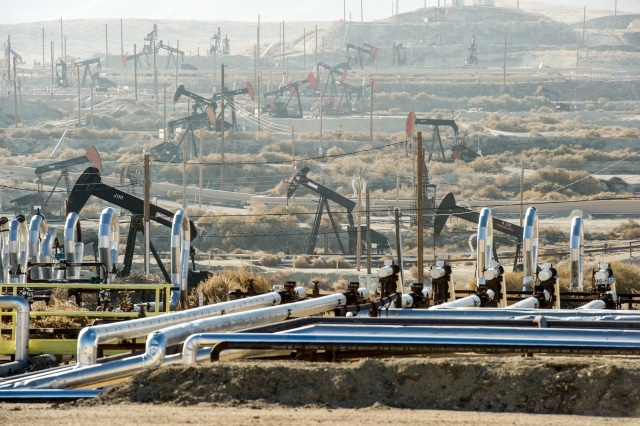Jim Kenna, the California Director of the U.S. Bureau of Land Management, told reporters on a conference call last Thursday that a new scientific report commissioned by the agency to study the environmental impacts of fracking has cleared the way for the leasing of public land to oil and gas companies in the Golden State.
Environmentalists, on the other hand, say that the report is anything but a solid basis on which to forge ahead with opening up more land to fracking.
“This report raises grave concerns about fracking pollution’s threat to California’s air and water,” says Kassie Siegel, director of the Center for Biological Diversity’s Climate Law Institute. “But it also highlights the fact that government officials have never collected the data needed to determine the extent of the damage in our state. Using this report as a basis for continued fracking in California is illogical and illegal.”
The report itself does not try and hide its own shortcomings. One section reads: “Investigators could not determine the groundwater quality near many hydraulic fracturing operations and found that existing data was insufficient to evaluate the extent to which contamination may have occurred.”
Another part of the report says: “No information could be found about the toxicity of about a third of the chemicals and few of the chemicals have been evaluated to see if animals or plants would be harmed by chronic exposure.”
The Center for Biological Diversity, along with the Sierra Club, sued the federal government last year, arguing that the Obama Administration had broken the law when it decided to lease some 2,500 acres of public lands in Monterey County to oil and gas companies without properly studying the environmental risks of fracking.
A federal judge agreed with the green groups and ordered a halt to the leases.
Aside from citing a significant lack of data on which to base their conclusions, the report’s authors at the California Council on Science and Technology also seemed to advise caution: “Current practice and testing requirements do not necessarily protect against adding produced water contaminated with hydraulic fracturing fluid to water used in agriculture,” they wrote.
Elsewhere, they issued an unequivocal warning that because fracking in California typically happens at especially shallow depths, there was more than enough cause for concern: “Hydraulic fracturing at shallow depths poses a greater potential risk to water resources because of its proximity to groundwater and the potential for fractures to intersect nearby aquifers.”
Nonetheless, the BLM, claiming the report found no evidence that fracking is dangerous, plans to begin leasing public lands again next year.
Image credit: Christopher Halloran / Shutterstock.com
Subscribe to our newsletter
Stay up to date with DeSmog news and alerts






